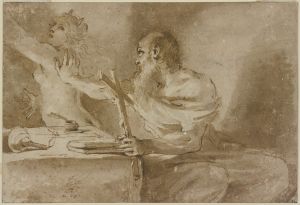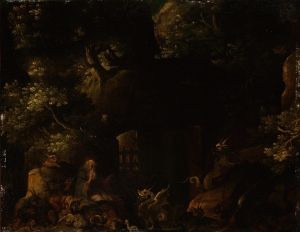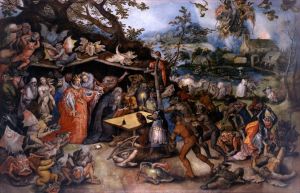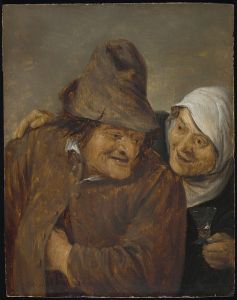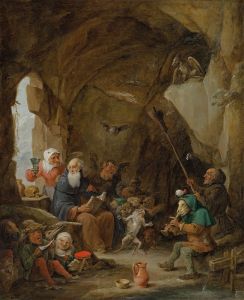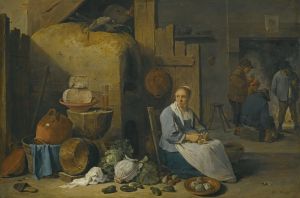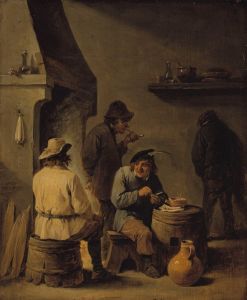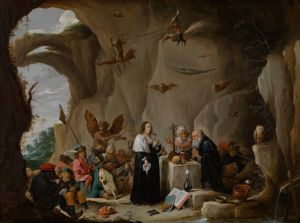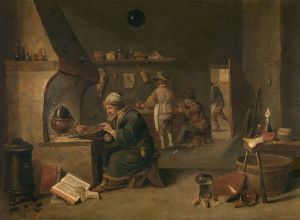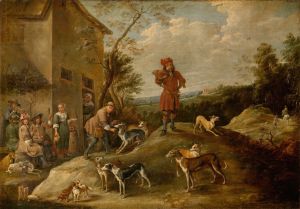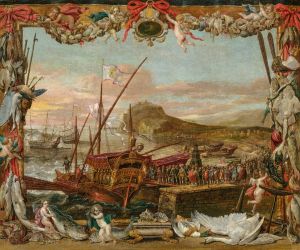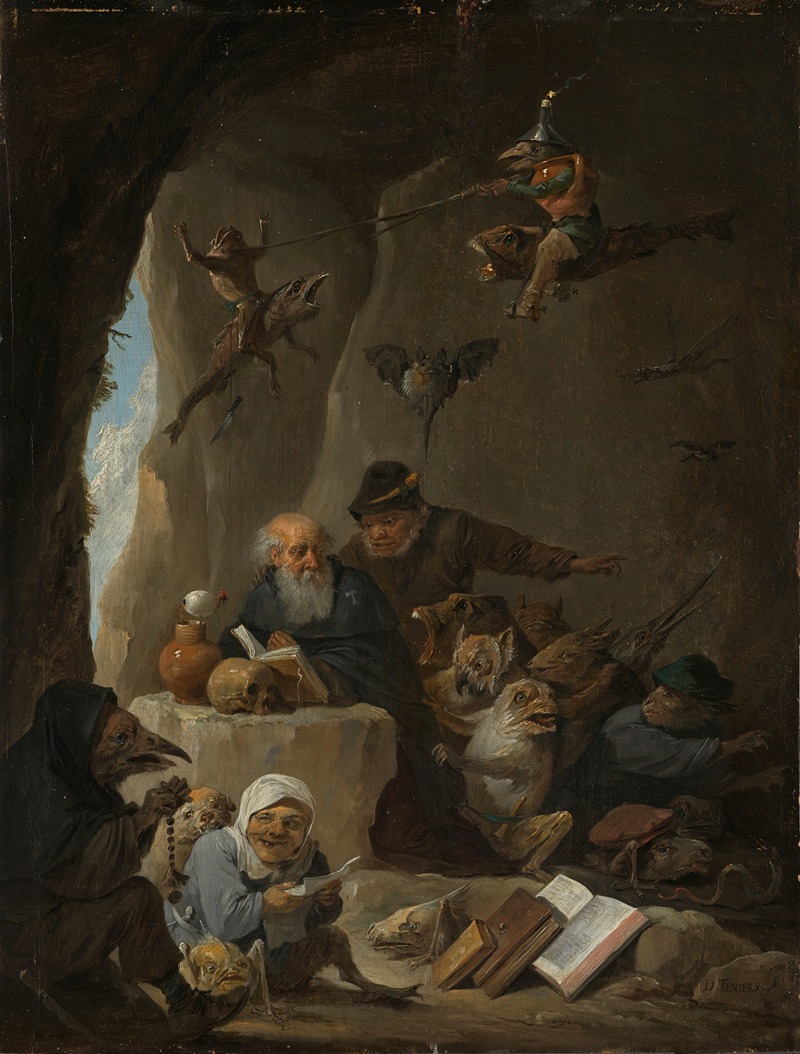
The Temptation of St Anthony
A hand-painted replica of David Teniers The Younger’s masterpiece The Temptation of St Anthony, meticulously crafted by professional artists to capture the true essence of the original. Each piece is created with museum-quality canvas and rare mineral pigments, carefully painted by experienced artists with delicate brushstrokes and rich, layered colors to perfectly recreate the texture of the original artwork. Unlike machine-printed reproductions, this hand-painted version brings the painting to life, infused with the artist’s emotions and skill in every stroke. Whether for personal collection or home decoration, it instantly elevates the artistic atmosphere of any space.
David Teniers the Younger, a prominent Flemish Baroque painter, is renowned for his depictions of genre scenes, landscapes, and religious subjects. One of his notable works is "The Temptation of St. Anthony," a theme he revisited multiple times throughout his career. Teniers was born in Antwerp in 1610 and was the son of David Teniers the Elder, also a painter. He became a master in the Antwerp Guild of Saint Luke in 1632-33 and later served as the court painter for Archduke Leopold Wilhelm of Austria.
"The Temptation of St. Anthony" is a subject that has fascinated artists for centuries, drawing on the story of St. Anthony the Great, an early Christian monk who faced numerous temptations during his time in the Egyptian desert. The narrative, rich with allegorical and symbolic elements, provided artists with the opportunity to explore themes of piety, sin, and redemption.
Teniers' interpretation of "The Temptation of St. Anthony" typically features the saint in a desolate landscape, surrounded by a variety of grotesque and fantastical creatures. These creatures often symbolize the vices and temptations that St. Anthony resisted, such as greed, lust, and gluttony. Teniers' skillful use of color and composition brings a vividness to these scenes, capturing the dramatic tension between the saint's steadfast faith and the chaotic forces that seek to distract him.
In Teniers' paintings, St. Anthony is usually depicted as an elderly, bearded man, dressed in a monk's habit, often shown in prayer or deep contemplation. The surrounding landscape is often barren, emphasizing the isolation and spiritual struggle of the saint. Teniers' attention to detail and his ability to create a sense of movement and energy in his compositions are evident in the way he portrays the various demons and fantastical elements.
Teniers' work was influenced by earlier depictions of the same theme, notably those by Hieronymus Bosch and Pieter Bruegel the Elder. However, Teniers brought his unique style to the subject, blending the fantastical with a more grounded, realistic approach. His ability to balance the bizarre with the believable made his interpretations of St. Anthony's temptations particularly compelling.
"The Temptation of St. Anthony" by David Teniers the Younger is housed in various collections, reflecting the artist's popularity and the enduring appeal of this subject. His works can be found in major museums and galleries, where they continue to be studied and admired for their artistic merit and historical significance.
Teniers' paintings of St. Anthony serve as a testament to his skill as an artist and his ability to convey complex narratives through his art. His contributions to the Baroque period and his influence on subsequent generations of artists remain significant, as he successfully combined elements of realism and fantasy to explore timeless themes of human experience.





